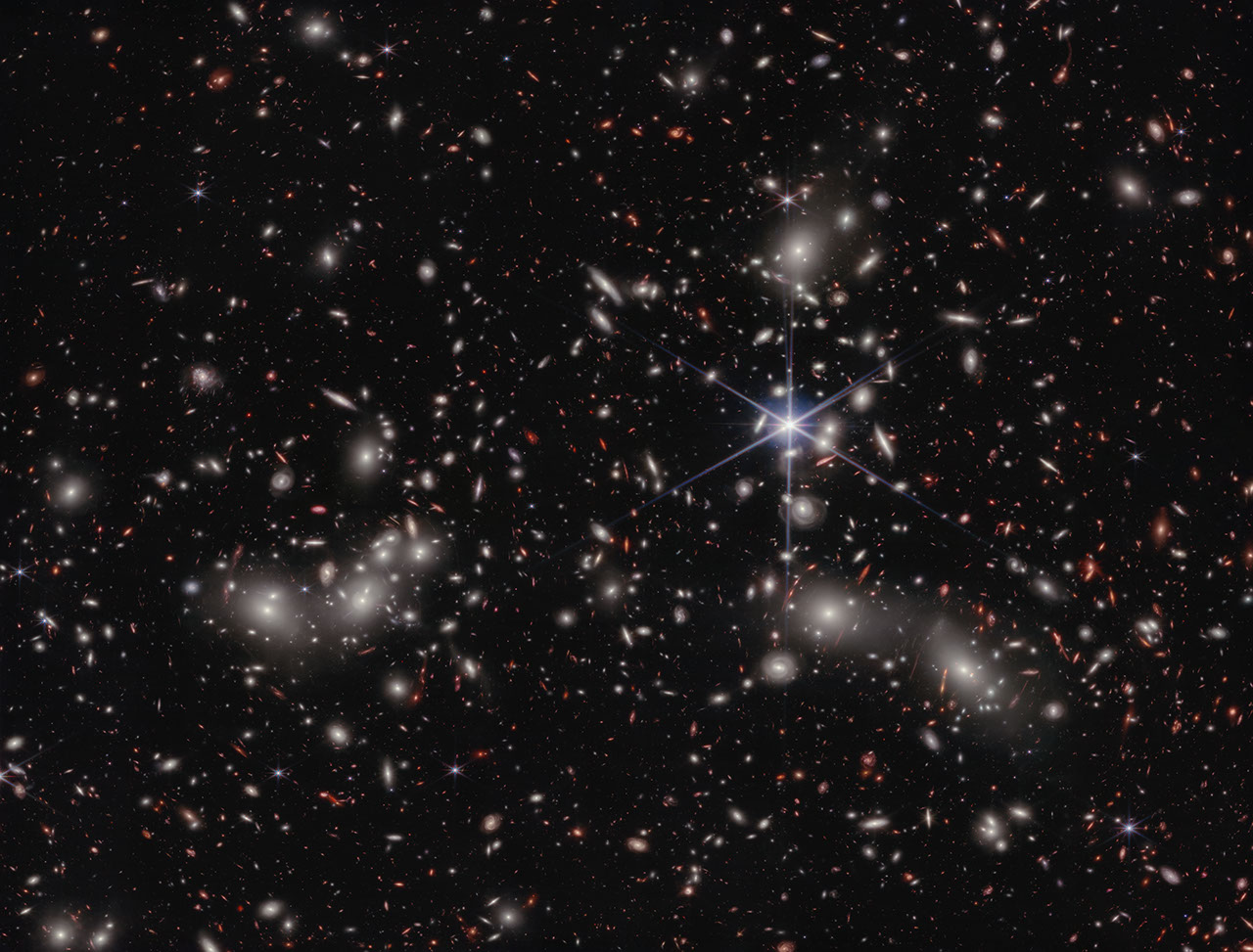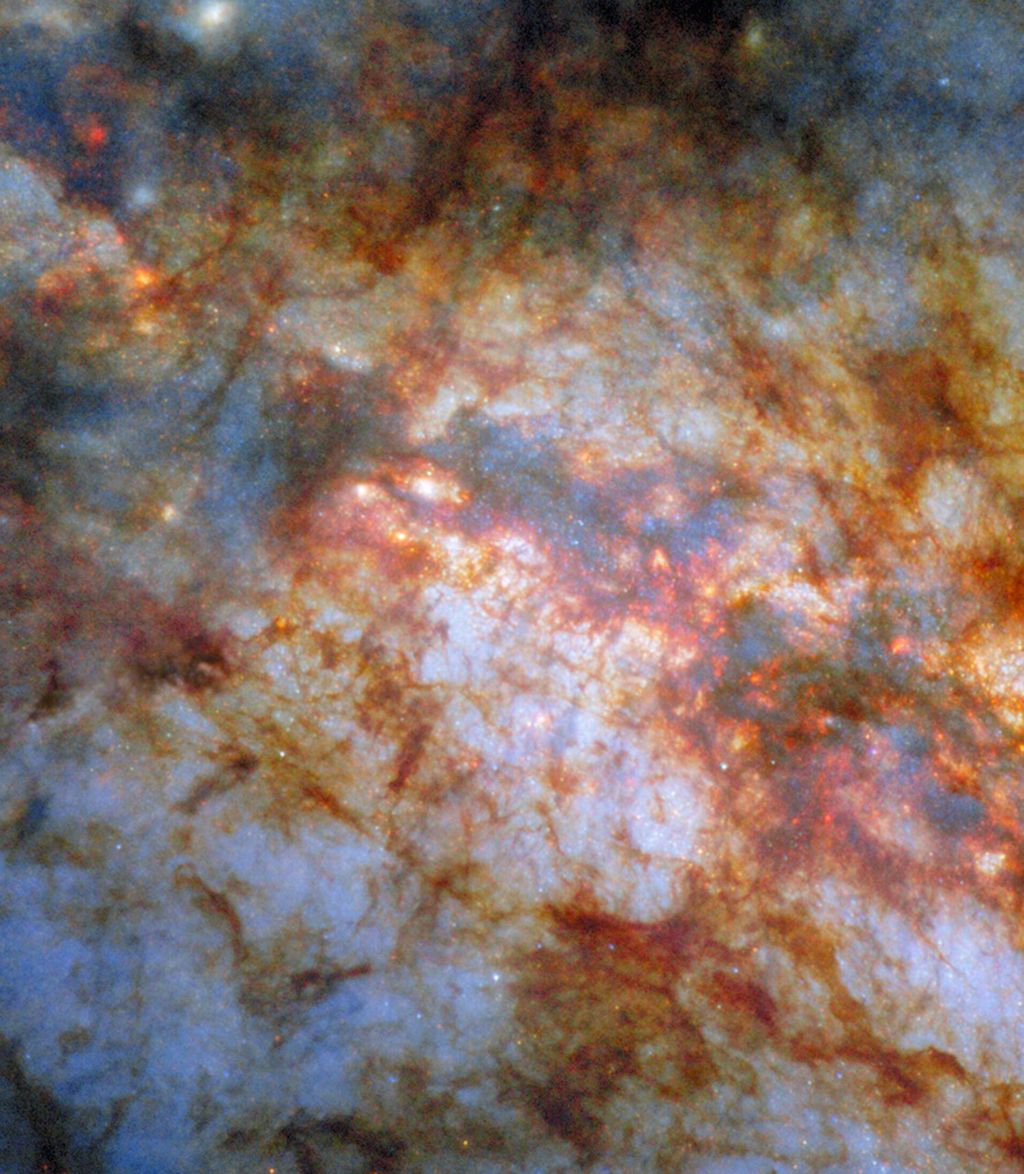1 min read
Take a Tour of Pandora’s Cluster
This video tours Pandora’s Cluster (Abell 2744), a region where multiple clusters of galaxies are in the process of merging to form a megacluster. Astronomers estimate 50,000 sources of near-infrared light are represented in this image from NASA’s James Webb Space Telescope.
The concentration of mass in Pandora’s Cluster is so great that the fabric of spacetime is warped by gravity, creating an effect that makes the region of special interest to astronomers: a natural, super-magnifying glass called a “gravitational lens” that they can use to see very distant sources of light beyond the cluster that would otherwise be undetectable, even to Webb. These lensed sources, which are particularly prominent in the lower right area, appear red in the image, and often as elongated arcs distorted by the gravitational lens.
The video also highlights a mysterious object that appears to be no more than a red dot. One theory is that this source of infrared light is a glowing disk of gas surrounding a supermassive black hole in the early universe.
- Release DateFebruary 15, 2023
- Science ReleaseNASA’s Webb Uncovers New Details in Pandora’s Cluster
- CreditVideo: STScI, Danielle Kirshenblat; Music: PremiumBeat Music, Klaus Hergersheimer; Science: Ivo Labbe (Swinburne), Rachel Bezanson (University of Pittsburgh); Image Processing: STScI, Alyssa Pagan
Downloads
Related Images & Videos

Pandora's Cluster (NIRCam Image)
Astronomers estimate 50,000 sources of near-infrared light are represented in this image from NASA’s James Webb Space Telescope. Their light has travelled through varying distances to reach the telescope’s detectors, representing the vastness of space in a single image. A...
Share
Details
Laura Betz
NASA’s Goddard Space Flight Center
Greenbelt, Maryland
laura.e.betz@nasa.gov
STScI, Danielle Kirshenblat
PremiumBeat Music, Klaus Hergersheimer
Ivo Labbe (Swinburne), Rachel Bezanson (University of Pittsburgh)
STScI, Alyssa Pagan




























